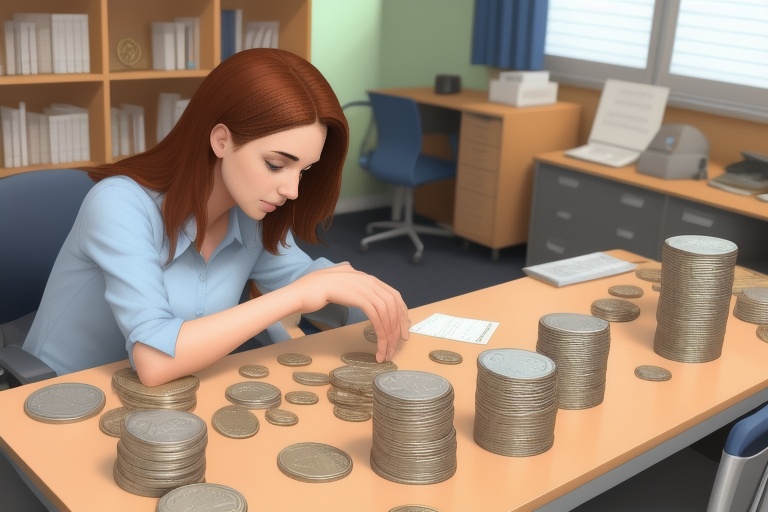Coin collecting is an engrossing pastime that continues to fascinate those with an interest in history, artwork, and economics. This multifaceted hobby, steeped in history, offers a window into the cultural and political landscapes of various time periods and regions. From the worn ridges of ancient Roman denarii to the shimmering surfaces of uncirculated Silver Eagles, every coin tells a tale of its own origin and journey.
Coin collecting is an engrossing pastime that continues to fascinate those with an interest in history, artwork, and economics. This multifaceted hobby, steeped in history, offers a window into the cultural and political landscapes of various time periods and regions. From the worn ridges of ancient Roman denarii to the shimmering surfaces of uncirculated Silver Eagles, every coin tells a tale of its own origin and journey.
The Value of a Coin: A Confluence of Factors
At the very heart of numismatics—the study and collection of coins—lies the assessment of a coin's value. This value is a product of several contributing factors, which every collector should consider before adding a new piece to their collection.
Rarity
One of the key components in appraising a coin's worth is its rarity. Coins minted in limited quantities or those from historical periods when few specimens were produced or survived often carry a premium. Collectors are usually eager to pay more for a coin if they know it is one of only a handful in existence.
Historical Significance
The historical context of a coin can greatly influence its appeal and, consequently, its market value. Coins that were part of significant historical events or time periods, such as the reign of a famous ruler or the declaration of a nation's independence, are often sought after by collectors who are keen to own a tangible piece of history.
Condition
The physical state of a coin, often referred to as its grade, is pivotal in determining its desirability. Coins in pristine condition, showing no wear from circulation and maintaining their original luster, are generally worth more than those with scratches, dents, or any form of deterioration.
Demand
The current market demand plays a substantial role in influencing the value of a coin. Even common coins can escalate in worth if there's an increase in collector interest, often driven by new trends or the discovery of a previously unknown historical fact about a coin or series.
Understanding Coin Types and Worth
As a coin collector, it is important to recognize the various categories of coins and their intrinsic values. Coin collections can be focused on specific time periods, such as pre-Colonial or post-Independence coins, or encompass a variety of themes like wildlife, great battles, or significant milestones in space exploration.
Collecting by Era or Origin
Some collectors dedicate their efforts to amassing coins from particular eras or countries, as this provides a structured approach to building a collection with historical coherence. Whether it's the allure of medieval European coinage or the elegance of modern commemorative issues, each collector will have their preference based on personal interests and goals.
Diverse Themes in Coinage
Others might opt for thematic collections, which can range from a focus on specific denominations, such as penny or dollar coins, to broader concepts like coins featuring portraits of world leaders or iconic landmarks.
The Ever-Changing Market: Staying Informed
The market value of coins can be volatile, subject to fluctuations driven by changing collector interests and external economic factors. Staying abreast of the latest developments and trends in the coin-collecting world is essential for both assessing your collection's value and deciding on future acquisitions.
The Role of Supply and Demand
The classic economic model of supply and demand applies as much to coin collecting as to any other market. If a particular coin becomes popular, but the supply remains unchanged, its price is likely to rise as collectors vie to own it. Conversely, if the interest wanes or if a hoard is discovered, increasing the available supply, the value might decrease.
Resources for Coin Collectors
Navigating the field of coin collecting and valuation can be daunting, especially for those new to the hobby. Fortunately, a wealth of resources is available to assist every level of collector, from the novice to the seasoned expert.
Online Communities and Coin Forums
The internet has opened new avenues for collector education and networking. Online forums and communities are places where collectors can connect, exchange knowledge, and stay up-to-date on market changes. These platforms often feature discussions on specific coin types, trading advice, and alerts about counterfeit coins.
Local Coin Clubs and Numismatic Societies
For a more hands-on approach, local coin clubs and numismatic societies provide opportunities to meet fellow collectors, attend talks, and participate in coin shows. Interaction with experienced collectors and numismatists can offer invaluable insights and mentorship for growing your collection.
Reputable Coin Dealers
Establishing relationships with trustworthy coin dealers is crucial. These professionals can provide guidance on purchases, offer appraisals, and sometimes even alert clients to upcoming acquisitions that fit their collecting interests.
Conclusion
Coin collecting is not merely the amassing of monetized metal tokens; it is a gateway to discovering and appreciating the rich tapestry of the world's history. It can provide endless hours of enjoyment, the thrill of the chase, and the satisfaction of unlocking the narratives behind each addition to your collection. Regardless of age or cultural background, numismatics is a hobby that can be both rewarding and educational. Embrace the challenge, equip yourself with knowledge, and let each coin you encounter take you on a mesmerizing journey through the annals of history.
Information for this article was gathered from the following source.


